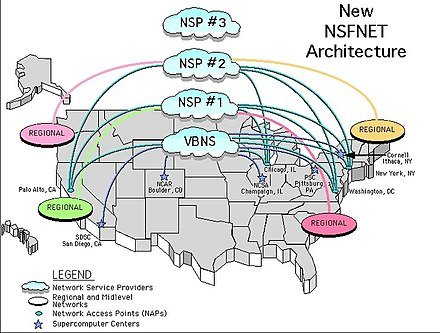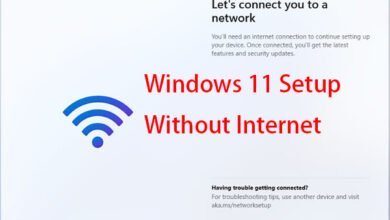
What is an Internet Exchange Point (IX)?
The term “Internet Exchange Point,” or IXP, holds significant importance in digital connectivity. It is a pivotal element in the architecture of the Internet, facilitating the exchange of Internet traffic among various networks, Internet Service Providers (ISPs), content delivery networks, and other entities. This article delves into Internet Exchange Points’ essence, functionality, benefits, challenges, and prospects.
Internet Exchange Points (IXPs)
An introduction to Internet Exchange Points (IXPs) is fundamental to understanding the Internet’s architecture. IXPs serve as critical hubs where different internet service providers and networks interconnect to exchange internet traffic directly.
IXPs minimize latency, optimize data routing, and enhance network performance by facilitating this direct peering. They play a pivotal role in reducing the reliance on third-party transit providers, resulting in faster data transmission and an improved user experience.
IXPs operate based on mutual agreements among participating networks, fostering a neutral environment for equitable peering. The significance of IXPs is critical to appreciating how internet traffic flows efficiently across interconnected networks, enabling seamless connectivity and access to online resources worldwide.
Understanding the Purpose of IXPs
Understanding the purpose of Internet Exchange Points (IXPs) is crucial for navigating the complexities of Internet connectivity. IXPs serve as central hubs where various networks and internet service providers interconnect to exchange internet traffic directly.
The primary aim of IXPs is to facilitate efficient data transmission by enabling direct peering agreements between networks. By bypassing third-party intermediaries, IXPs reduce latency, optimize network performance, and minimize data transit costs. Additionally, IXPs promote network resilience and redundancy by offering alternative routes for data exchange.
Understanding the role of IXPs helps stakeholders leverage their benefits, including enhanced network performance, reduced costs, and an improved user experience. Embracing the purpose of IXPs fosters collaboration, innovation, and equitable access to internet resources in the digital age.

Enhancing Network Performance
Enhancing network performance is critical at Internet Exchange Points (IXPs). IXPs are vital hubs where networks and service providers interconnect to exchange internet traffic directly. By facilitating this direct peering, IXPs significantly reduce latency, optimize data routing, and enhance overall network performance.
This natural traffic exchange minimizes the need for data to travel through multiple intermediary networks, resulting in faster data transmission speeds and improved reliability. Furthermore, IXPs enable networks to manage their traffic flows efficiently, leading to more stable and resilient internet connections. Ultimately, the role of IXPs in enhancing network performance contributes to a smoother and more seamless internet experience for users worldwide.
The Architecture of Internet Exchange Points
The Internet Exchange Point (IXP) architecture is foundational to understanding their role in facilitating efficient data exchange. IXPs are structured around robust networking infrastructure comprising high-speed switches, routers, and fibre optic cables.
These components form the backbone of IXPs, enabling the seamless exchange of data packets among interconnected networks. The architecture is designed to support high-volume data transmission and ensure minimal latency, optimizing network performance. Additionally, IXPs often incorporate redundancy measures to enhance reliability and fault tolerance.
Understanding the architecture of IXPs provides insights into their scalability, resilience, and ability to accommodate the increasing demands of internet traffic. By embracing a robust architectural framework, IXPs play a pivotal role in shaping the efficiency and effectiveness of internet connectivity on a global scale.
How IXPs Facilitate Efficient Data Exchange
Internet Exchange Points (IXPs) facilitate efficient data exchange among networks and service providers. IXPs operate on the principle of peering, where participating networks establish bilateral agreements to exchange internet traffic directly.
This direct peering arrangement bypasses the need for data to traverse multiple intermediary networks, reducing latency and optimizing data transmission speeds. By connecting to an IXP, networks can achieve faster and more reliable data exchange, improving network performance and the user experience.
Additionally, IXPs enable networks to manage their traffic flows more effectively, ensuring efficient use of network resources. Overall, the ability of IXPs to facilitate direct peering and efficient data exchange enhances the scalability, reliability, and resilience of internet connectivity infrastructure.
Benefits of Connecting to an IXP
Connecting to an Internet Exchange Point offers several benefits for networks and Internet service providers, including:
Reduced latency and improved network performance
Lower costs associated with data transit and bandwidth utilization
Enhanced reliability and redundancy in data delivery
Opportunities for network optimization and traffic engineering
Different Types of Internet Exchange Points
Various Internet Exchange Points (IXPs) exist to facilitate network interconnections. Public IXPs allow open peering among diverse networks, fostering collaboration and data exchange. Regional IXPs serve localized areas, enhancing network efficiency and reducing latency for connected networks within the region. Each type plays a crucial role in optimizing internet connectivity and data exchange.
Key Players in the IXP Ecosystem
Key players in the IXP ecosystem include Internet Service Providers (ISPs), content providers, cloud service providers, and network operators. ISPs facilitate end-user access to the Internet. Content providers deliver digital content and services.
Cloud service providers offer scalable computing resources. Network operators manage and maintain the network infrastructure. Together, these stakeholders shape the dynamics of Internet traffic exchange and infrastructure development.
Choosing the Right IXP for Your Needs
Selecting the correct Internet Exchange Point requires careful consideration of factors such as geographic location, peering policies, service offerings, and network interconnection options. Organizations can identify IXPs that align with their operational requirements and strategic objectives by evaluating these parameters.
Challenges and Solutions in IXP Operations
Challenges and solutions in Internet Exchange Point (IXP) operations are critical considerations for ensuring the efficiency and reliability of Internet connectivity. One challenge is scalability, as IXPs must accommodate increasing traffic volumes while maintaining high performance.
Solutions include deploying scalable infrastructure and optimizing network architecture. Security threats, such as DDoS attacks and data breaches, pose another challenge. Mitigation strategies involve implementing robust security measures, including intrusion detection systems and encryption protocols.
Regulatory compliance is also a challenge, with solutions including adherence to data protection laws and collaboration with regulatory authorities. Operational sustainability is crucial, with solutions involving efficient resource management and sustainable business models. Addressing these challenges ensures the continued effectiveness and resilience of IXPs in facilitating seamless internet connectivity and data exchange.

Future Trends in Internet Exchange Points
Future Internet Exchange Points (IXPs) trends will revolutionize how data is exchanged and managed across networks. One prominent trend is integrating artificial intelligence and machine learning algorithms within IXPs to optimize traffic routing and enhance network efficiency.
Additionally, the rise of edge computing and 5G technology drives the deployment of distributed IXPs closer to end-users, reducing latency and improving the user experience. Moreover, the growing demand for secure and reliable data transmission leads to the adoption of blockchain technology within IXPs to ensure data integrity and transparency.
These trends signify a shift towards more agile, decentralized, and intelligent IXPs capable of meeting the evolving demands of the digital landscape while fostering innovation and collaboration across the internet ecosystem.

Case Studies
Case studies showcasing successful implementations of Internet Exchange Points (IXPs) provide valuable insights into their impact on network performance and digital connectivity. For example, implementing IXPs in regions with limited internet infrastructure has improved data exchange efficiency and network reliability. In Africa, initiatives such as the African Internet Exchange System (AXIS) have facilitated local peering and reduced latency, enhancing the overall internet experience for users.
Similarly, in Europe, the Euro-IX association has supported the establishment of IXPs across the continent, fostering collaboration among networks and promoting regional internet exchange. These case studies highlight the transformative potential of IXPs in bridging digital divides, stimulating economic growth, and empowering communities to harness the benefits of the digital age.
IXPs and Internet Infrastructure Development
Internet Exchange Points (IXPs) are crucial in developing Internet infrastructure by facilitating efficient data exchange and promoting digital connectivity. As essential hubs for network interconnection, IXPs enable local peering and content delivery, reducing reliance on external networks and enhancing overall network performance.
By fostering a robust ecosystem of interconnected networks, IXPs contribute to the growth of digital economies and expand internet access to underserved communities. Furthermore, IXPs serve as catalysts for innovation, promoting the development of new technologies and services that enrich the digital experience for users worldwide. As internet usage continues to grow, IXPs will remain integral to the evolution of internet infrastructure, paving the way for a more interconnected and accessible digital future.
Regulatory Considerations for IXPs
Regulatory considerations for Internet Exchange Points (IXPs) are pivotal in shaping their operation and interconnection policies. Across jurisdictions, regulatory frameworks vary, impacting IXPs’ management, governance, and compliance requirements.
These frameworks encompass interconnection agreements, data protection laws, licensing, and government oversight. Striking a balance between fostering competition, ensuring consumer protection, and promoting innovation is paramount in regulatory discussions surrounding IXPs.
IXPs can foster an environment conducive to equitable access, fair competition, and transparent interconnection policies by navigating regulatory complexities and adhering to industry best practices. Collaborative engagement with regulatory authorities, industry stakeholders, and policymakers is essential to establishing a regulatory framework that promotes the long-term sustainability and growth of IXPs while safeguarding the interests of all parties involved.
Security and Privacy Concerns in IXPs
Security and privacy concerns at Internet Exchange Points (IXPs) pose significant challenges to the integrity and confidentiality of Internet traffic. IXPs are vulnerable to various threats, including distributed denial of service (DDoS) attacks, traffic interception, and data manipulation.
Mitigating these risks requires robust security measures like encryption protocols, traffic monitoring, and threat detection systems. Additionally, enhancing stakeholder collaboration and sharing threat intelligence can help bolster the collective defence against emerging cyber threats.
Regulatory compliance with data protection laws and privacy regulations is also paramount to safeguarding user data and preserving trust in IXPs. IXPs can uphold the highest data integrity standards by prioritizing security and privacy initiatives, ensuring a safe and secure environment for internet traffic exchange.

Conclusion
In conclusion, Internet Exchange Point (IXPs) are essential to Internet infrastructure, facilitating seamless data exchange and enhancing network performance globally. Their role in minimizing latency, reducing costs, and promoting digital connectivity underscores their significance in the digital age.
Despite facing security threats and regulatory complexities, IXPs continue evolving, driving innovation and fostering stakeholder collaboration. As the digital landscape expands, IXPs will play a pivotal role in shaping the future of internet connectivity, enabling businesses, communities, and individuals to thrive in an increasingly interconnected world. Embracing the principles of collaboration, transparency, and innovation will be vital to harnessing the full potential of IXPs to create a more accessible, resilient, and equitable Internet for all.
How can organizations benefit from connecting to an Internet Exchange Point?
Organizations can derive several benefits from connecting to an Internet Exchange Point (IXP), including:
- Reduced latency and improved network performance.
- Lower costs are associated with data transit and bandwidth utilization.
- Enhanced reliability and redundancy in data delivery.
- Opportunities exist for network optimization and traffic engineering. By leveraging the direct peering capabilities of IXPs, organizations can optimize their network connectivity, enhance the user experience, and achieve greater operational efficiency.
What are the key challenges facing Internet Exchange Points, and how can they be addressed?
Internet Exchange Points face several challenges: scalability, security threats, regulatory compliance, and operational sustainability. To address these challenges, stakeholders must collaborate to:
- Implement scalable infrastructure and governance frameworks.
- Enhance security measures to mitigate cyber threats and privacy risks.
- Navigate regulatory requirements and promote industry best practices.
- Foster a supportive ecosystem that encourages innovation and collaboration among participants.
How do regulatory frameworks impact the operation and interconnection policies of Internet Exchange Points?
Regulatory frameworks governing Internet Exchange Points vary across jurisdictions and may impact their operation, management, and interconnection policies. Regulatory considerations include:
- Interconnection agreements and peering policies.
- Compliance with data protection and privacy regulations.
- Licensing requirements and government oversight.
- Promotion of fair competition and consumer protection. IXPs can promote a level playing field and ensure equitable access to internet resources by navigating regulatory complexities and fostering transparent interconnection policies.
What measures can be implemented to mitigate security and privacy risks in Internet Exchange Points?
To mitigate security and privacy risks at Internet Exchange Points (IXPs), stakeholders can implement a range of measures, including:
- Deploying robust encryption protocols and traffic monitoring mechanisms.
- Conducting regular security audits and vulnerability assessments.
- Collaborating with industry partners to share threat intelligence and best practices.
- We are educating stakeholders about cybersecurity best practices and risk mitigation strategies. By adopting a proactive approach to security and privacy, IXPs can safeguard the integrity and confidentiality of internet traffic, fostering trust and confidence among participants and end-users.








